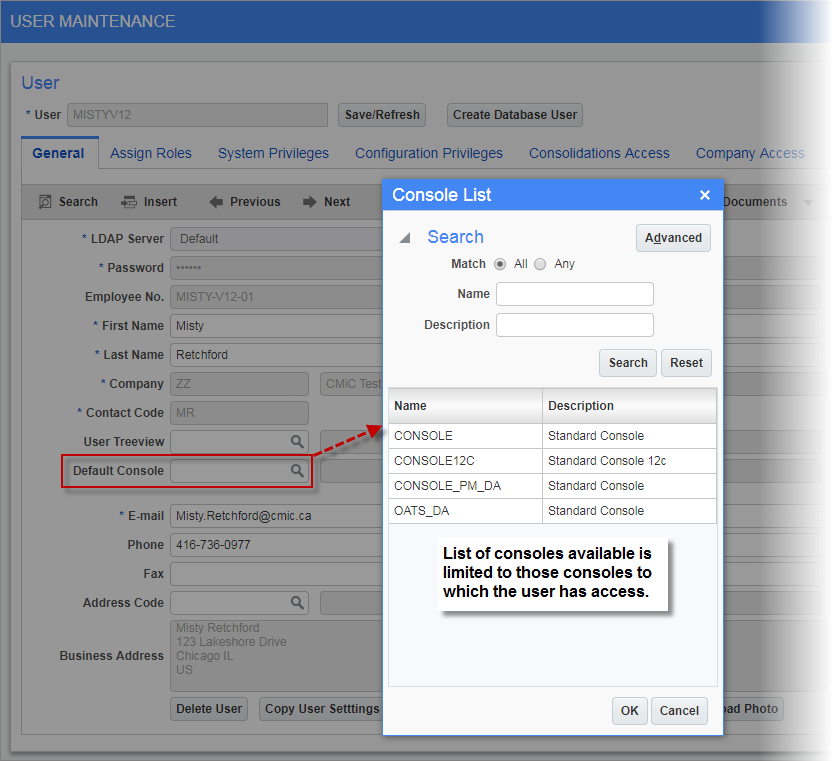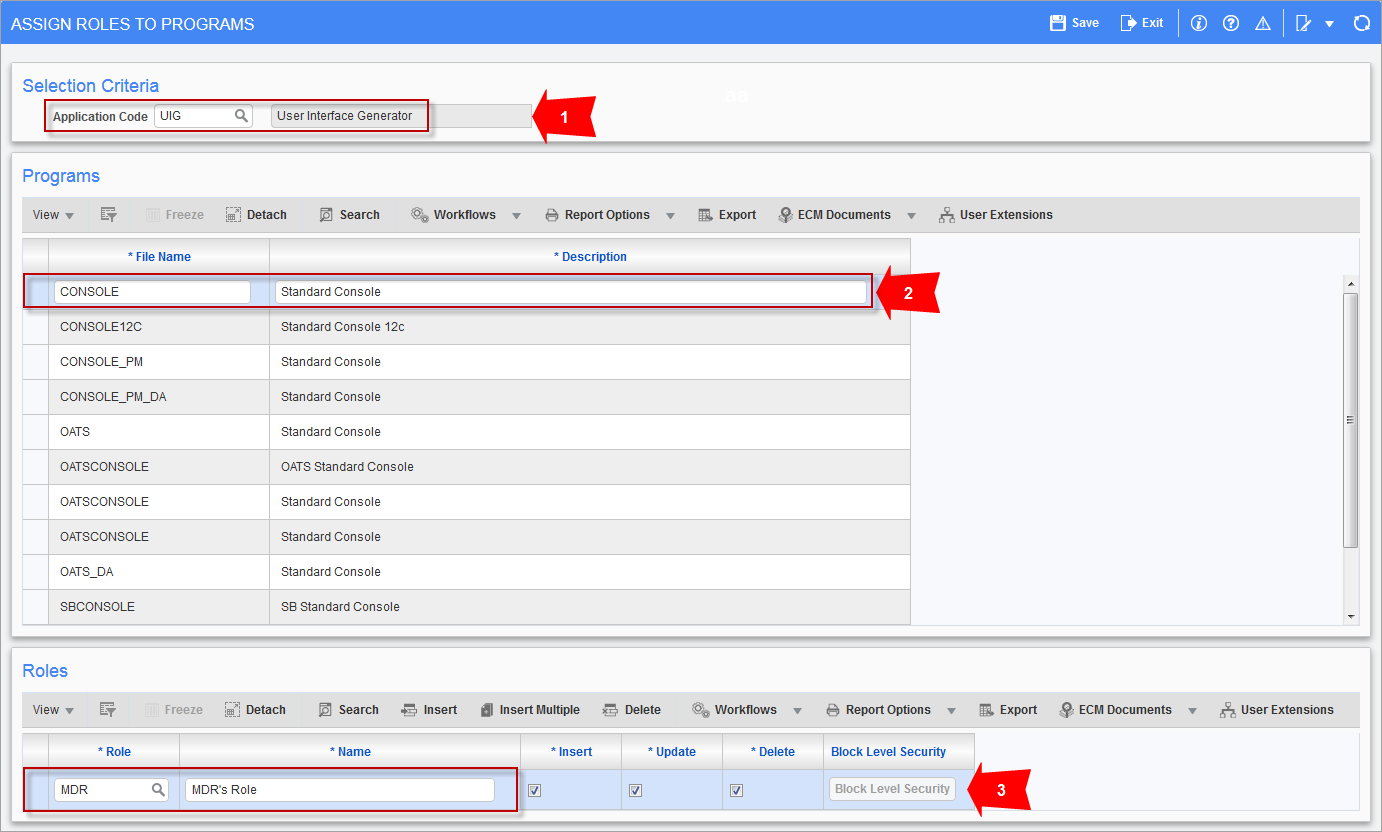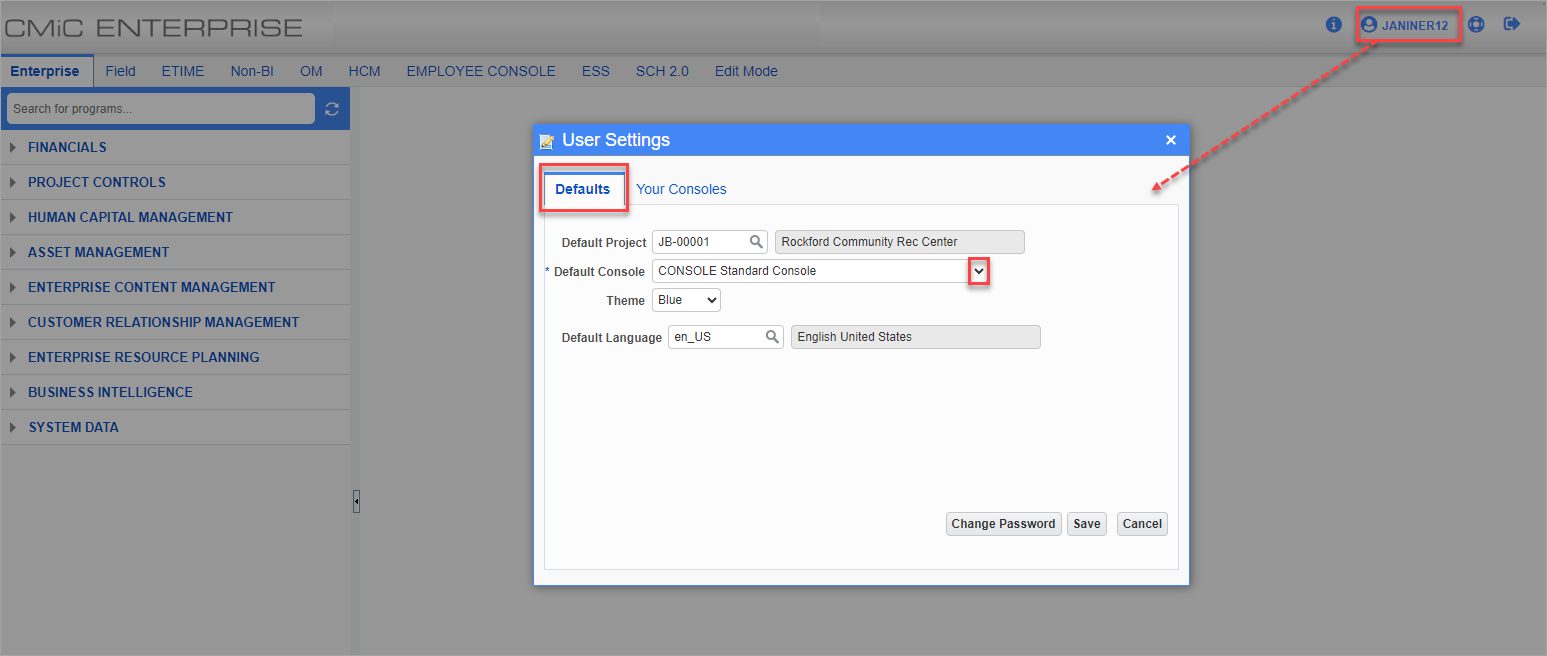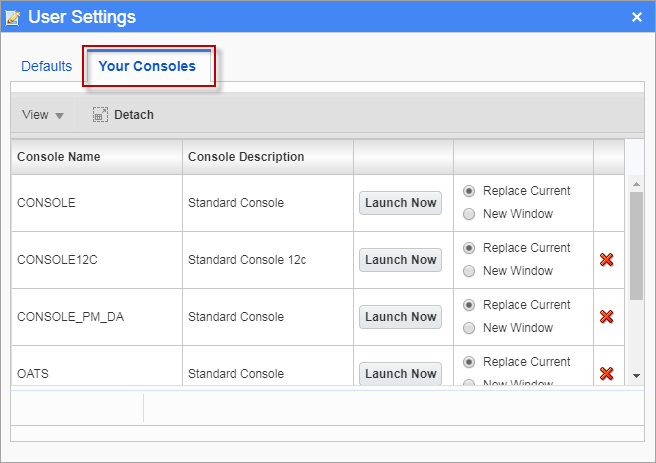A default console can be set in the User Maintenance screen in the System Data module, or from the username link on the UI Console. Both of these methods are described below.
User Maintenance

Pop-up window launched from Default Console LOV on the General tab of the User Maintenance screen (standard Treeview path: System > Security > Users > User Maintenance - General tab)
The first method of defining a default console is by setting it on the User Maintenance screen in the System Data module. The Default Console field, located on the General tab, is used to set a user’s default console so that when the user logs into Enterprise, the default console loads automatically, skipping the console selection screen.
If a default console is not set (i.e., Default Console field is left empty), when the user logs into Enterprise, the console selection screen will appear, allowing the user to select a console from a list of available consoles to which the user has access.
NOTE: The Default PM Console field is only available for Cloud users and can be used to set a user's default PM console. If a default PM console is not set (i.e., Default PM Console field is left empty), the system will run the CMiC Field (PMJSP) module instead.
Security Requirements for Accessing Consoles
A user’s access to a console is driven by two levels of security: User Interface Generator (UIG) Customization Levels and Role Security. If both levels of security requirements are not met, the user may not be able to access the console.
To set a default console for a user, ensure the following two security steps have been followed.
-
UIG Customization Levels: Click on the Default Console field’s LOV to select a console. The list of consoles available in the LOV is limited to only those consoles to which the user has access. For a user to gain access to a console, the console must be defined at the Standard level, Site (Client) level, Group (UIC) level the user belongs to, or at the User level. Access is defined on the Configuration Privileges tab of the User Maintenance screen.
-
Role Security: Since consoles (standard and custom-defined) can also be secured by security roles, verify that the user has access to the default console as per role security. Role security is assigned to a console on the Assign Roles to Programs screen in the System Data module, as shown in the screenshot below.

Pgm: FORMROLE – Assign Roles to Programs; standard Treeview path: System > Security > Roles > Assign Roles to Programs
In the Application Code field, select “UIG”. A list of available consoles will be displayed in the Programs section of the screen. Select a console in the Programs section of the screen to display the roles assigned to that console in the Roles section of the screen below. If the console has no roles assigned, then it is available to everyone. Otherwise, if a role is assigned to the console, the console will only be available to users that have the required role. In the example above, for a user to see the selected console, the user must have the required role displayed in the Roles section.
NOTE: If a user's security role is not assigned to a console under the UIG application, then when the user attempts to log into the assigned console, it will not be available for selection. Refer to No Named Consoles Available for Selection to see an example of this situation.

Pgm: SDUSRMNT – User Maintenance; standard Treeview path: System > Security > Users > User Maintenance – Assign Roles tab
Roles are assigned to users on the User Maintenance screen, as shown in the screenshot above.
User Settings

User Settings pop-up window launched from username link on UI Console – Defaults tab
A default console can also be defined in the Defaults tab of the User Settings pop-up window launched from the username link on the UI Console tool. If a default console was already set in the General tab of the User Maintenance screen for the user, then it will default here in this pop-up window if the user still has access to it as per role security. The drop-down menu in the Default Console field in this pop-up window follows the same security rules as the Default Console field on the General tab of the User Maintenance screen.

User Settings pop-up window launched from username link on UI Console – Your Consoles tab
The Your Consoles tab in the User Settings pop-up window only lists consoles to which the user has access. This tab is used to launch a different console or to delete a named console and all of its variants from the system. For more information, please see UI Console - User Console Settings - Pop-up Window.
No Named Consoles Available for Selection

Example of No Named Consoles Available for Selection
If a user attempts to log into an assigned console on the console selection screen and the Select Named Console field appears disabled (i.e., no consoles are available for selection), it is because the user's security role has not been assigned to the console.
To solve this issue, ensure that the user's role is assigned to the console under the UIG application. In the Assign Roles to Programs screen, locate the user's console and assign the appropriate security role. For more information, refer to Security Requirements for Accessing Consoles.